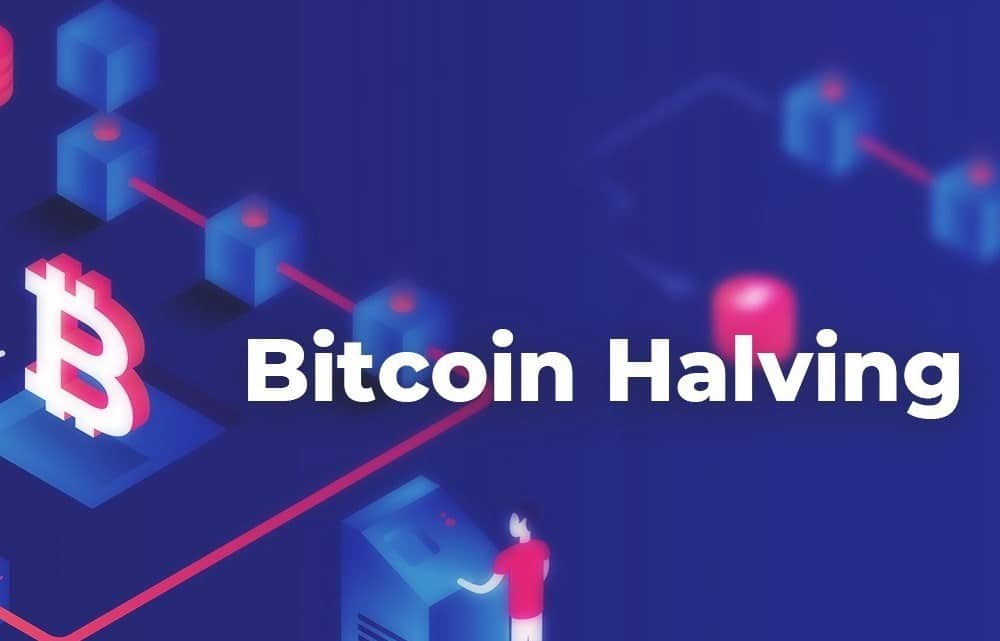
For every four years, Bitcoin endures an event called “Bitcoin halving”. After the creation of Bitcoin, the first halving took place in 2012, then in 2016, and now in May 2020.
Before we get into what is Bitcoin Halving, let’s understand about Bitcoin Mining Rewards.
Bitcoin Mining Rewards
Bitcoin mining is a process by which the network is secure and transactions are processed. To mine Bitcoin, a thousand watts of electricity is been used every day. People are interested in Bitcoin mining because they earn rewards in the form of Bitcoins and use them in various markets.
To mine cryptocurrencies that use proof of work concept, the miners will be rewarded for solving each block. The amount of reward should be appropriate (not too high or too low) to be a strong incentive. It is because a large reward will cause an oversupply and the small reward will lower the value of the currency.
Let’s now understand what is Bitcoin Halving.
What is Bitcoin Halving ?
Bitcoin halving is an event that occurs when the pace of new bitcoin creation is halved. This event takes place every four years. Bitcoin supply is finite, it means the supply is limited to 21 million coins.
Presently there are 18 million coins under circulation. It doesn’t mean the currency will reach its limit anytime soon. When Bitcoin came into existence, the block reward was 50BTC every 10 minutes. There is a statement in the Bitcoin code which states that after every 210,000 blocks or after every four years, this block reward should halve.
As three halving events have occurred since Bitcoin’s invention, the current block reward is 6.25 Bitcoin.

How does a Bitcoin Halving Work ?
Bitcoin was launched in 2009, during this time the miners received 50BTC per block. So, a total of 10,500,000 BTC was created before the next halving which took place in November 2012. At this time the miners received 25 BTC per block. The bonus seems to be too high. But, as it was the starting point and hardly a few people knew about this investment opportunity.

Also, the all-time high market price of BTC at that time was $31 per BTC in June 2011. But, by the year-end, the currency dropped to $2. Hence, for those who purchased BTC in the early stages have gained lots of profit. So, the Bitcoin critics call it a Ponzi scheme.
The second Bitcoin halving took place in July 2016. A block number 420,000 was generated and the miners were rewarded with 12.5 BTC for every block. The third Bitcoin halving occurred in May 2020 which lowered the block reward to 6.25BTC.
What are the effects of Bitcoin halving on the network ?
Bitcoin halving has a number of effects on the network.
- The life of the bitcoin mining reward system will extend. Suppose 50BTC for every 10 minutes was released, then the maximum supply of Bitcoin would have reached quickly. This would result in the cease of the Bitcoin mining rewards in 8 years. So, if the reward rate will be reduced, then the miners can receive rewards for a much longer time.
- With bitcoin halving, the Bitcoin price will also increase over time. It is because the number of Bitcoin generated each year will decrease. Hence the supply will be limited and the scarcity will also increase proportionally.
- The cost of mining each Bitcoin will also increase with the use of Bitcoin halving. The network difficulty increases and the reward rate drops, resulting in an increase in the cost of mining. When this cost increases, the trading price of each Bitcoin will also increase.
What happens when the reward rate reaches zero ?
Bitcoin operation was started in 2009 and it is estimated that the final block will be mined in the year 2140. It means that it takes a total of 130 years. So, by that time the economic conditions of cryptocurrency may be different and there will not be a need for a block reward.
Miners earn a secondary income other than the block reward. It is the transaction fee. Every day thousands of bitcoins are paid in transaction fees. So, by the year 2140, it is possible that mining will be done for transaction fees only which will be profitable than block reward. Nakamoto described the same thing in the Bitcoin whitepaper,
“Once a predetermined number of coins have entered circulation, the incentive can transition entirely to transaction fees and be completely inflation free.”
Bitcoin Halving 2020
The Bitcoin halving 2020 occurred on May 11, 2020. It is the third halving event which resulted in the reduction of block reward from 12.5 BTC to 6.25 BTC for every new block that is mined roughly every 10 minutes.
The number of new Bitcoins mined every day is been cut from roughly 1,800 to 900 BTC per day. Bitcoin halving is the most notable event which serve as a gateway to attract new traders and investors into the industry.
A notable feature of Bitcoin halving 2020 is that the issuance rate has dropped the inflation rate to 1.8%. This rate is below the inflation target of the United States Federal Reserve.
Conclusion
Bitcoin halving controls the number of new bitcoins generated every day. It aims to prevent the occurrence of hyperinflation. Bitcoin halving ensures that the rampant production of new coins will never happen. In fact, it predicts that the reverse scenario should occur. Bitcoin halving is a way to keep Bitcoin prices moving upward for a long period of time. If Bitcoin Halving would not happen, then the Bitcoin price would be only $50 or $100 each and not thousands of dollars.
Disclaimer: The information provided is not trading advice, Bitcoinworld.co.in holds no liability for any investments made based on the information provided on this page. We strongly recommend independent research and/or consultation with a qualified professional before making any investment decisions.

